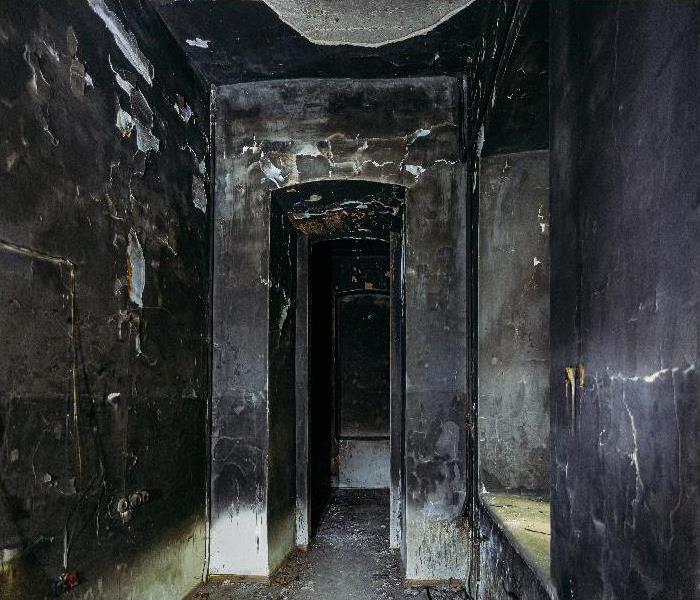What Factors Impact Cleaning Buffalo Grove Homes After Fire Losses?
9/18/2020 (Permalink)
 When it comes to cleaning up after a fire loss incident, there are several obstacles that professional restorers must face.
When it comes to cleaning up after a fire loss incident, there are several obstacles that professional restorers must face.
There are several potential obstacles to cleaning and restoring fire-damaged Buffalo Grove homes.
Cleaning up after fire damages is a vital process for your Buffalo Grove home, but it can be difficult to achieve without careful considerations and evaluations. Soot and smoke residues are standard with structure fires, but the type of soil and the most appropriate cleaning methods vary based on numerous circumstances. Factors that can impact the efficiency and efficacy of cleaning products and approaches include the type of residue, the affected material, and where these damages exist in the house.
Fire damage in Buffalo Grove can be anything from structural concerns to lingering odors in the house after extinguishment. One of the most substantial obstacles in the restoration of homes and businesses after a fire is smoke residues and soot adhering to materials, contents, and circulating in the environment.
How Does the Material Type Change Cleaning Approaches?
There are multiple factors specific to affected materials or burning materials that can impact the produced residue and make cleaning more difficult. When too many of these factors are working against our SERVPRO team's restoration professionals, it might be more cost-efficient to consider controlled demolition over restoration. Some of these modifying factors include:
• Porosity – This is a measure of how readily particles can penetrate a material. The greater a porosity rating, the more particles and odor molecules from combustion can become a restoration challenge.
• Age of Material – Aging materials are more sensitive to severe residue damage. Part of this has to do with a change in porosity as a surface degenerates over time.
• Softness – The composition of the material can change how readily soot and smoke residues can get removed. Soft materials can be more challenging to clean than hard surfaces like glass and porcelain.
• Material Burned – The type of material burned changes the kind of residue generated. Plastics and rubber create coatings that can easily smear, while wood and natural elements leave drier residues that are less stubborn.
Can Temperature Present Cleaning Obstacles?
Changes in the temperature of surfaces or the environment can impact how efficient cleaning approaches are. Our technicians monitor and modify temperatures when applicable for the shortest recovery times. This monitoring process must continue throughout the entire restoration and mitigation phases. Changing temperatures, such as rapid cooling, could cause hot oils in specific residues to leave behind a film.
• Heat of the Fire – Regarding cleaning, the higher the fire's heat, the harder surfaces generally are to clean for many reasons. Residues can be thicker, porous materials can become more damaged, and many other reasons.
• Charring – High-heat and direct flames can char or blister surfaces, making cleaning and removing residues impossible.
• Temperature for Cleaning – Warmer temperatures can be a benefit to chemical processes used in cleaning residues. Excessive heat can damage surfaces, however, requiring a balance for efficient chemical processes.
What Are the Types of Smoke Residues?
The combustion of various materials produces different residues to contend with on exposed surfaces nearby. Identifying the type of residue that must get cleaned is a more efficient approach to removing these soils than sample testing with different products and techniques. Each of these potential coatings presents its own specific obstacles to cleaning, making its determination vital for our team's responding professionals. The likely residues present in your home might include:
• Dry Smoke – Fast-paced combustion eliminates many fuels in your home like wood framing, flooring, and supports. High heat fires like these produce a thinner, chalky residue for our team to clean.
• Wet Smoke – Higher humidity and other factors can change the pace that combustion occurs and the speed of moving fires. Smoldering produces thicker smoke, which becomes a compromising residue on surfaces and contents.
• Furnace Puff-Backs – A small explosion in the oil furnace's combustion chamber can shoot ionized soot throughout the ducts. These residues appear as dark black spider webs in the corners of the room and around the vents.
• Protein Residues – Kitchen fires often result from the mismanagement of cooking appliances and surfaces, so when proteins are involved in the burning and combustion, a thick, greasy residue can adhere to exposed nearby surfaces.
When it comes to cleaning up after a fire loss incident, there are several obstacles that professional restorers must face. Our SERVPRO of Buffalo Grove / Lake Zurich team is well versed in various residue types and the hurdles that can make surface cleaning more challenging. Give us a call anytime at (847) 279-1940.






 24/7 Emergency Service
24/7 Emergency Service